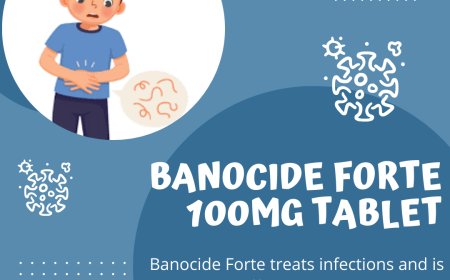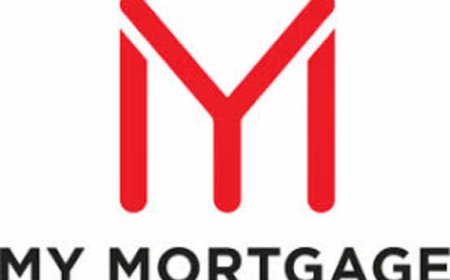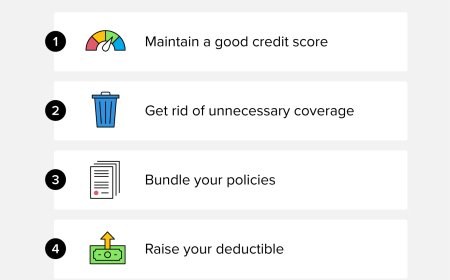How to Apply for OSAP Student Loan Ontario 2025
How to Apply for OSAP Student Loan Ontario 2025 Introduction The Ontario Student Assistance Program (OSAP) is a government-funded financial aid program designed to help students in Ontario cover the cost of post-secondary education. Whether you are attending college, university, or a trade school, OSAP offers loans and grants to eligible students to ease the financial burden of tuition fees, books
How to Apply for OSAP Student Loan Ontario 2025
Introduction
The Ontario Student Assistance Program (OSAP) is a government-funded financial aid program designed to help students in Ontario cover the cost of post-secondary education. Whether you are attending college, university, or a trade school, OSAP offers loans and grants to eligible students to ease the financial burden of tuition fees, books, living expenses, and more.
Applying for an OSAP student loan in 2025 remains a critical step for many Ontario students who want to pursue higher education without financial stress. Understanding the application process, eligibility criteria, and the best practices can significantly increase your chances of receiving the necessary funding.
This detailed tutorial will guide you through the complete process of applying for an OSAP student loan in Ontario for the year 2025. From preparing your documents to submitting your application and managing your loan, this guide covers everything you need to know.
Step-by-Step Guide
Step 1: Confirm Your Eligibility
Before applying, ensure you meet OSAP’s eligibility criteria. Generally, you must:
- Be a Canadian citizen, permanent resident, or protected person
- Be an Ontario resident
- Be enrolled in an approved post-secondary institution
- Be taking a full-time or part-time program
- Demonstrate financial need
Check specific program requirements on the official OSAP website, as eligibility may vary depending on your academic program and status.
Step 2: Gather Required Documents
Having all necessary documents ready will streamline the application process. Commonly required documents include:
- Social Insurance Number (SIN)
- Proof of Ontario residency (e.g., Ontario driver’s license, utility bill)
- Income information for you and/or your parents or spouse (tax returns, Notice of Assessment)
- Details of your educational institution and program
- Bank account information for direct deposit
Step 3: Create or Log Into Your OSAP Account
Visit the official OSAP website and create an account if you are a first-time user. Returning applicants can simply log in. Your OSAP account is where you will start and manage your application, upload documents, and track your funding status.
Step 4: Complete the OSAP Application
Once logged in, begin your application by selecting your academic program and institution. The application form will ask for personal information, educational details, and financial data. Take your time to enter accurate information to avoid delays.
Make sure to answer all questions honestly and thoroughly. Some applications require you to input parental or spouse information depending on your financial independence status.
Step 5: Submit Supporting Documents
After submitting your application, you will need to upload or mail supporting documents as requested by OSAP. These documents verify your income, residency, and enrollment status.
Keep digital copies of your documents ready for upload. If mailing physical copies, use tracked delivery to ensure OSAP receives them.
Step 6: Review Your Assessment
After processing your application, OSAP will provide a financial aid assessment outlining your loan and grant eligibility. Review this assessment carefully to understand the amount of funding you will receive and any conditions attached.
Step 7: Accept Your Funding
Log back into your OSAP account to accept or decline the loan and grant amounts offered. You can accept the full amount or a portion, depending on your needs.
Step 8: Confirm Your Enrollment
As part of the process, you must confirm your enrollment at your institution. This step is often automated if your school participates directly with OSAP, but you may need to provide proof of enrollment in some cases.
Step 9: Receive Your Funds
Once your funding has been approved and accepted, OSAP will disburse the loan and grant amounts. These funds typically go directly to your school to cover tuition and fees, with any remaining funds deposited into your bank account for living expenses.
Step 10: Manage Your Loan Responsibly
Keep track of your loan amounts, disbursement dates, and repayment terms. OSAP loans must be repaid after graduation or if you leave school, so understanding your obligations is crucial for maintaining good financial health.
Best Practices
Start Early
Begin your OSAP application as soon as possible, ideally months before your program starts. Early application increases the likelihood that your funding will be ready at the start of your academic term.
Provide Accurate Information
Double-check all the information you provide, especially your financial details. Inaccuracies can delay your application or result in incorrect funding amounts.
Keep Documentation Organized
Maintain digital and physical copies of all documents submitted. This will help if OSAP requests additional information or if you need to verify your application status.
Understand Your Financial Needs
Assess your budget realistically. Accept only the loan amount you need to minimize debt after graduation.
Monitor Your Application Status
Regularly log into your OSAP account to check for updates, messages, or requests for additional documents. Prompt response helps avoid processing delays.
Explore Grants and Bursaries
OSAP offers non-repayable grants and bursaries that can reduce your loan amount. Always apply for all available grants to maximize your funding.
Tools and Resources
Official OSAP Website
The primary resource for applying and managing your OSAP loan. It offers guides, eligibility calculators, and application portals.
OSAP Aid Estimator
This online tool helps estimate your potential OSAP funding based on your financial and educational information.
Budget Planner
Use budgeting tools to plan your expenses and determine how much funding you need, helping you accept the appropriate loan amount.
Financial Literacy Resources
Many universities and colleges provide workshops and online materials to help students understand student loans, budgeting, and repayment strategies.
Document Checklist
Prepare a checklist of required documents to ensure you have everything ready before starting your application.
Real Examples
Example 1: Full-Time University Student
Sarah is a first-year student at the University of Toronto enrolled in a full-time undergraduate program. She applied for OSAP early in the year, submitted all required documents, and received a combination of grants and loans covering her tuition and living expenses. By accepting only what she needed for rent and books, Sarah minimized her debt and successfully managed her finances throughout her studies.
Example 2: Part-Time College Student
James is working part-time and attending a community college program part-time. He applied for OSAP part-time assistance, which offers reduced funding compared to full-time programs but still helps with tuition costs. James ensured he provided accurate income information and regularly checked his OSAP account for updates, enabling him to receive timely funding.
Example 3: Mature Student Returning to School
Linda, a mature student returning to school after several years, applied for OSAP with documentation of her spouse’s income. By demonstrating financial need and enrolling in an eligible program, she qualified for grants that helped reduce the loan amount. Linda’s careful budgeting and early application ensured smooth funding disbursement.
FAQs
Q: When should I apply for OSAP?
A: It is recommended to apply as soon as you receive your confirmation of acceptance to a post-secondary institution, ideally 3 to 6 months before your program start date.
Q: Can I apply for OSAP if I am studying part-time?
A: Yes, OSAP offers funding options for part-time students, but the amount and eligibility criteria differ from full-time programs.
Q: What happens if my financial situation changes after applying?
A: You should update your OSAP application with any significant changes in your or your family’s financial situation to ensure your assessment is accurate.
Q: Do I have to repay the entire OSAP loan?
A: OSAP loans must be repaid after you complete your studies or leave school. Grants do not require repayment. Repayment terms vary, so it is important to understand your obligations.
Q: Can I apply for OSAP if I am an international student?
A: OSAP is generally available to Canadian citizens, permanent residents, or protected persons residing in Ontario. International students typically are not eligible.
Q: How do I check the status of my OSAP application?
A: You can log into your OSAP account to view updates, messages, and your funding assessment status.
Conclusion
Applying for an OSAP student loan in Ontario for 2025 is a crucial step toward financing your post-secondary education. By understanding the eligibility requirements, preparing your documents, and following the step-by-step application process, you can secure the necessary funding to support your academic journey.
Adhering to best practices such as starting early, providing accurate information, and monitoring your application status ensures a smooth experience. Utilize available tools and resources to assist with budgeting and application management. Whether you are a full-time, part-time, or mature student, OSAP offers valuable financial assistance tailored to your needs.
With careful planning and responsible loan management, OSAP can be a powerful resource to help you achieve your educational goals in Ontario.































